Learn to Evaluate Trad Anchors With This 12-Point Rubric
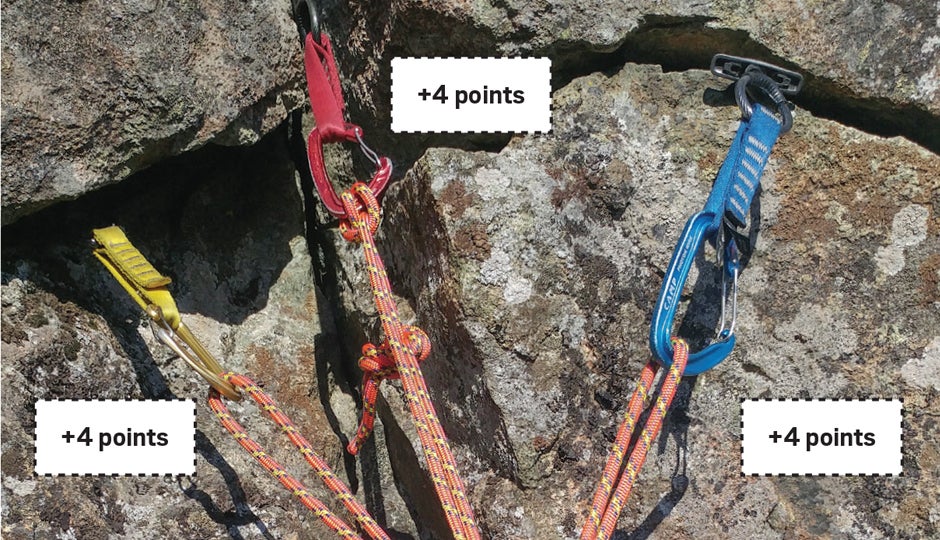
"None"
Many climbers use a rubric to help build solid anchors. Guides and books often talk about SERENE (Secure/Solid, Efficient, Redundant, Equalized with No Extension) and ERNEST (Equalized, Redundant, No Extension, Secure/Solid, Timely). However, while useful as guidelines, these acronyms could stand to go deeper into the strength side of the discussion. That’s where the 12-Point Anchor Rubric comes in: It assigns a point value to each piece and aims for a minimum total score of 12. With a baseline strength ascertained, you can then focus on the SERENE/ERNEST side of the equation.
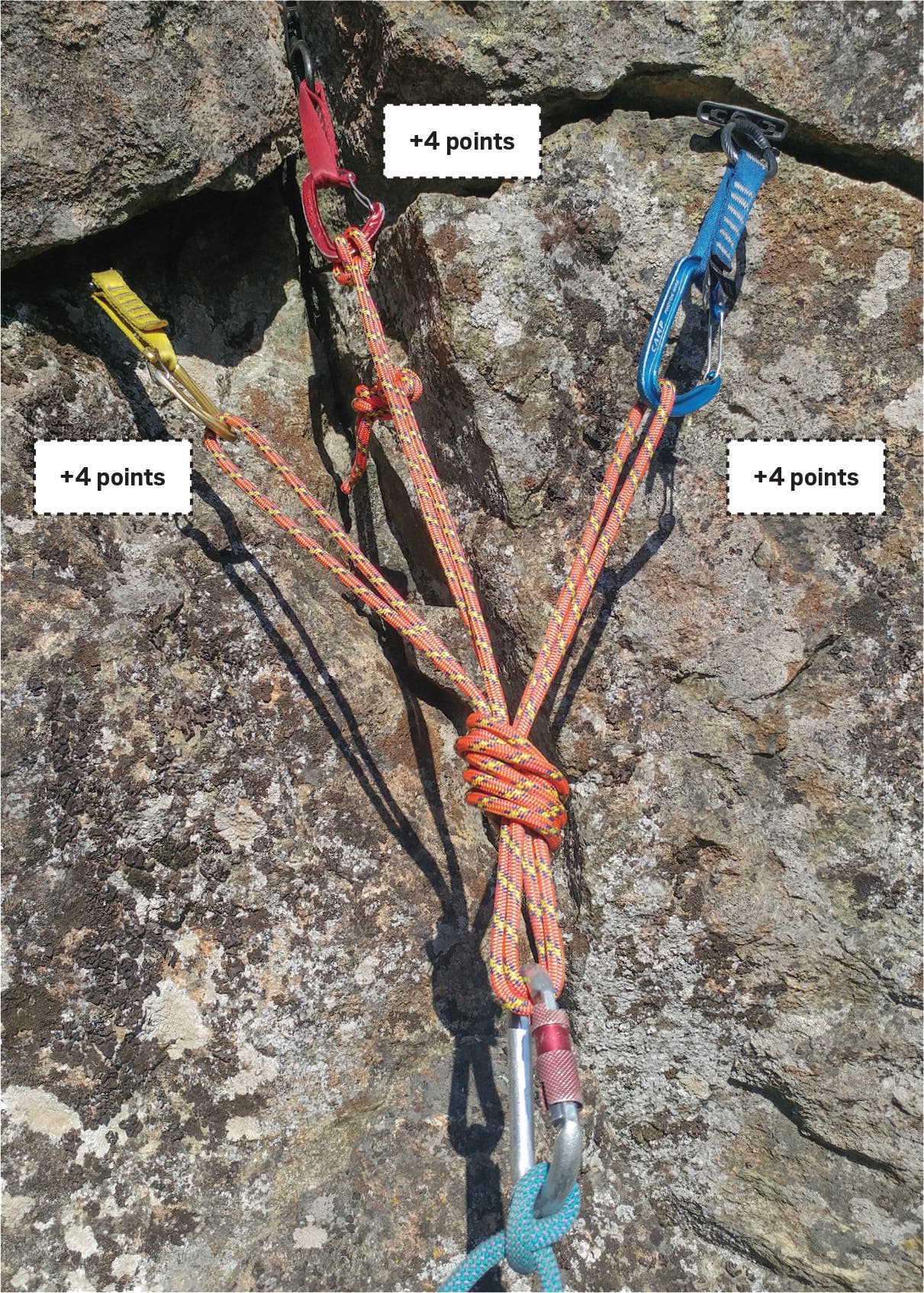
Over the last 18 years, I’ve taught hundreds of climbers how to lead traditional climbs. This can be a nerve-wracking process, as new leaders often place poor protection. They need solid guidance as to what is good and what is bad. Weak pieces and an inability to evaluate the strength of a given piece can lead to weak anchors. And of course, weak anchors can lead to catastrophe.
Years ago, I discovered a paragraph in an old NOLS climbing-instructor manual concerning the 12-point system. It said this rubric was something that a few instructors had used in the past, but that it never gained popularity. I began to experiment with the system in my instructing and found that students could easily latch onto the rubric to build effective anchors. Students need simplicity. They need something they can understand. And, most importantly, they need something to keep them safe when they are on their own. The 12-point system allows for all of that.
Many instructors teach new leaders that an anchor should be composed of three good pieces. There is certainly value in this as a guideline. However, the problem with this is that students sometimes forget the “good” part of the three-piece anchor equation. A three-piece anchor is totally inadequate if the individual components are unreliable.
The 12-point concept both supports and undercuts the three-piece anchor standard. It supports it by saying that if you can get three 4-point pieces, for a total of 12 points, then you have a solid anchor. However, it undercuts it by saying that some pieces might not actually be valued at 4 points, meaning you’ll have to be ready to improvise.
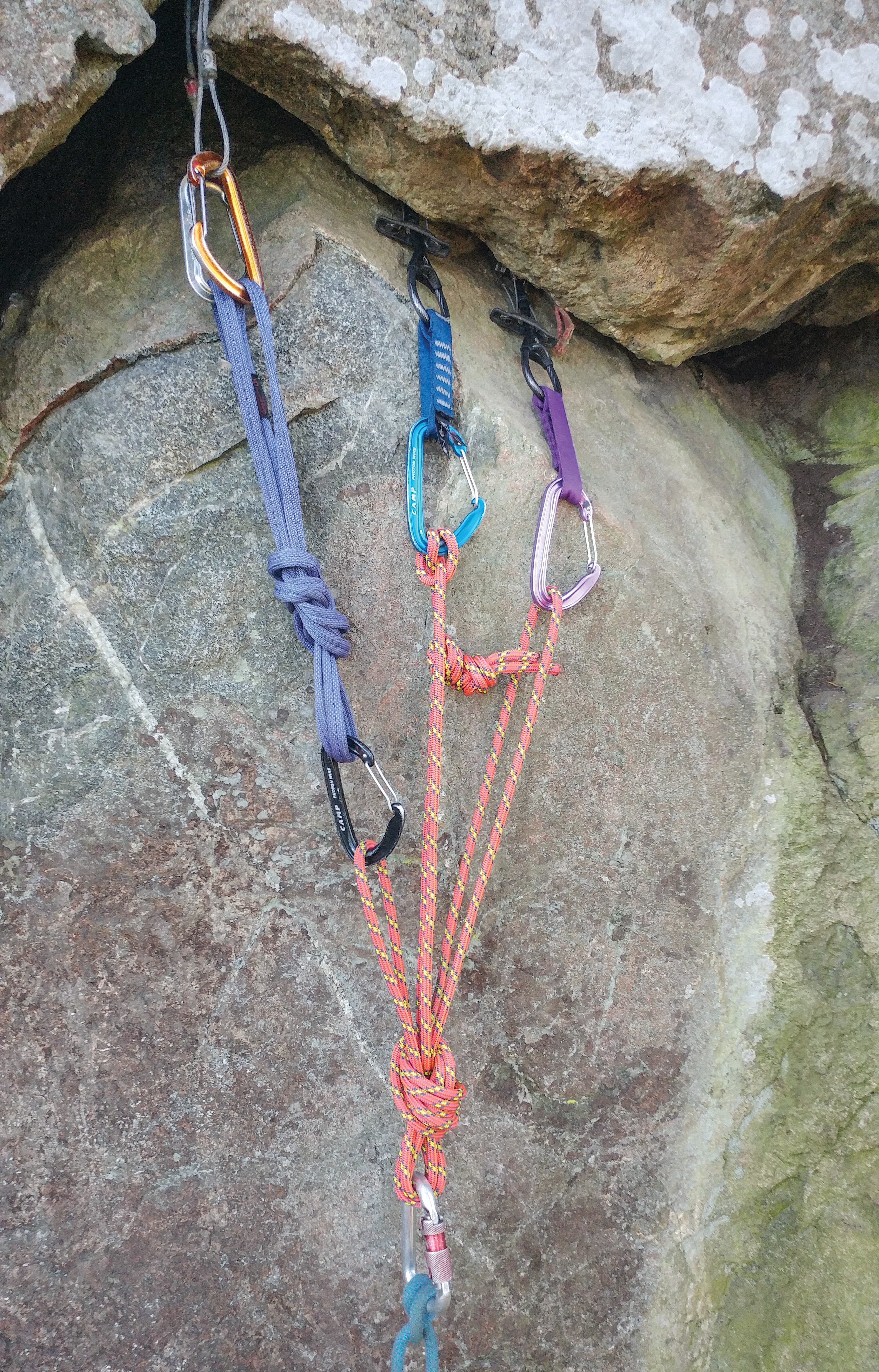
There are three additional considerations for new leaders to consider: 1) The individual pieces within an anchor must be good. In other words, they have to be placed appropriately to achieve their full point status (cams are not under- or over-cammed, cam lobes have appropriate contact, wired nuts are slotted with good surface contact, etc.). 2) The rock must be reliable—consider its density and overall strength (granite tends to be stronger than sandstone, etc.). And, 3) due to weird rock, flaring cracks, or a lack of pieces that fit properly, you may not be able to build a 12-point anchor with three pieces. The rock may force you to use four, five, or even six pieces to achieve your objective.
Meanwhile, in the alpine, it may be impossible or too inefficient to build a 12-point anchor. For example, the terrain might force you to build a two-piece anchor. To increase security in this situation, you can clip into this anchor and then belay directly off your belay loop, essentially using your body and stance to “add” 4 points. There’s nothing inherently wrong with this, and indeed, it’s actually quite strong. The 12-point rubric and the old “Three Pieces for an Anchor” idea were developed for beginning leaders. As you gain experience and mountain sense, it becomes easier to improvise in difficult terrain. A technically proficient climber knows the rules so that she can break them safely.
Anchor proficiency doesn’t come overnight. New leaders should build dozens of anchors on the ground before venturing up into real terrain, and ideally this is done with mentorship.
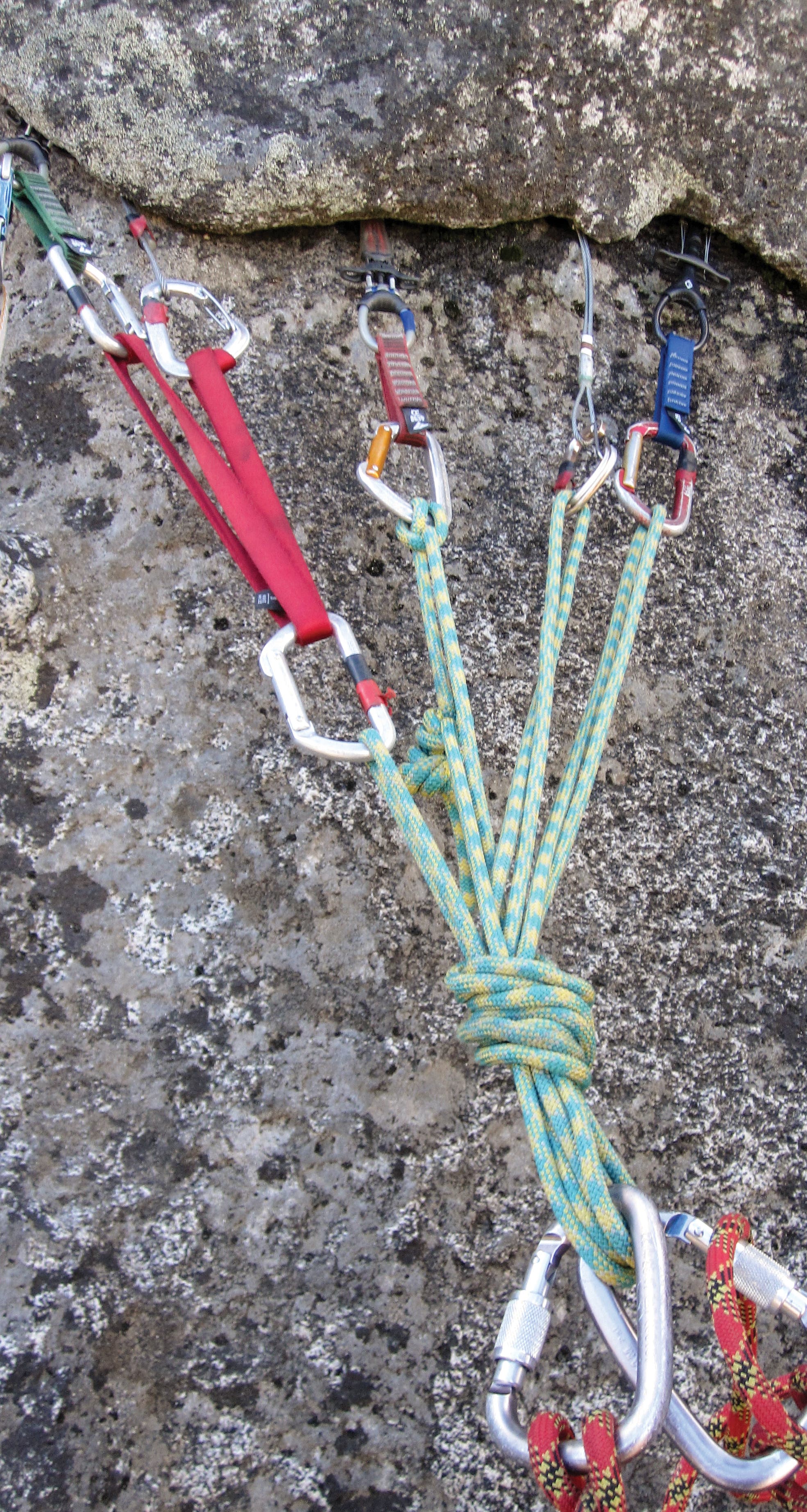
Point Values
Let’s look at general point values, from best to worst. Note that these are point values, not the number of protection points in the anchor.
- A four-point piece is bomber—able to hold a substantial fall.
- A three-point piece is pretty good—able to hold a 10- to 15-foot fall.
- A two-point piece is weak. Placed at your waist, it will hold a fall or body weight, but probably not much beyond that.
- A one-point piece is essentially an aid placement. It will hold body weight, but it’s unlikely to hold a fall.
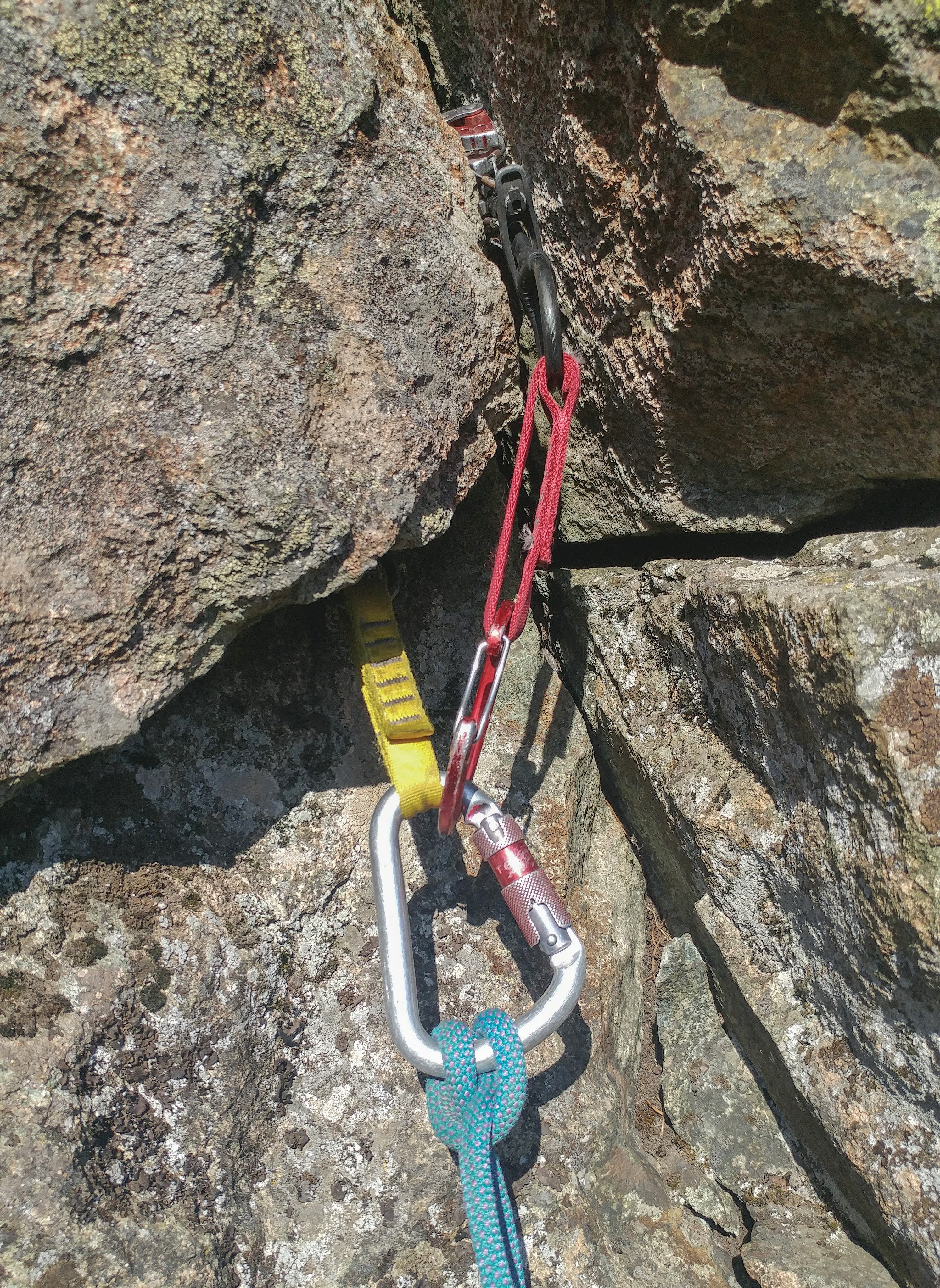
- Related: Itching to get more adventurous in your climbing? Take the AIM Adventure U Intro to Trad online course and get ready to step up your trad game.
Point Examples
Now consider the following specific examples of pieces/anchor options:
- 12 points: A large—at least desk-sized—stable, boulder
- 12 points: A large, living tree with a solid root base and a trunk that is at least 18 inches in diameter
- 6 points: A solid, well-placed bolt
- 4 points: A large (1” or more) cam in reliable rock
- 4 points: A large nut (Stopper size 8 or greater) in reliable rock
- 3 points: A small (1” or less) cam in reliable rock
- 3 points: A medium nut (Stopper 4–7) in reliable rock
- 3 points: A micro-cam (.3 or smaller) in reliable rock
- 1–2 points: Small nuts (Stopper 1–3); score contingent on nut size and rock quality
Jason D. Martin is a writer, AMGA Certified Rock Guide, general manager at the American Alpine Institute, and the technical director for the Red Rock Rendezvous.